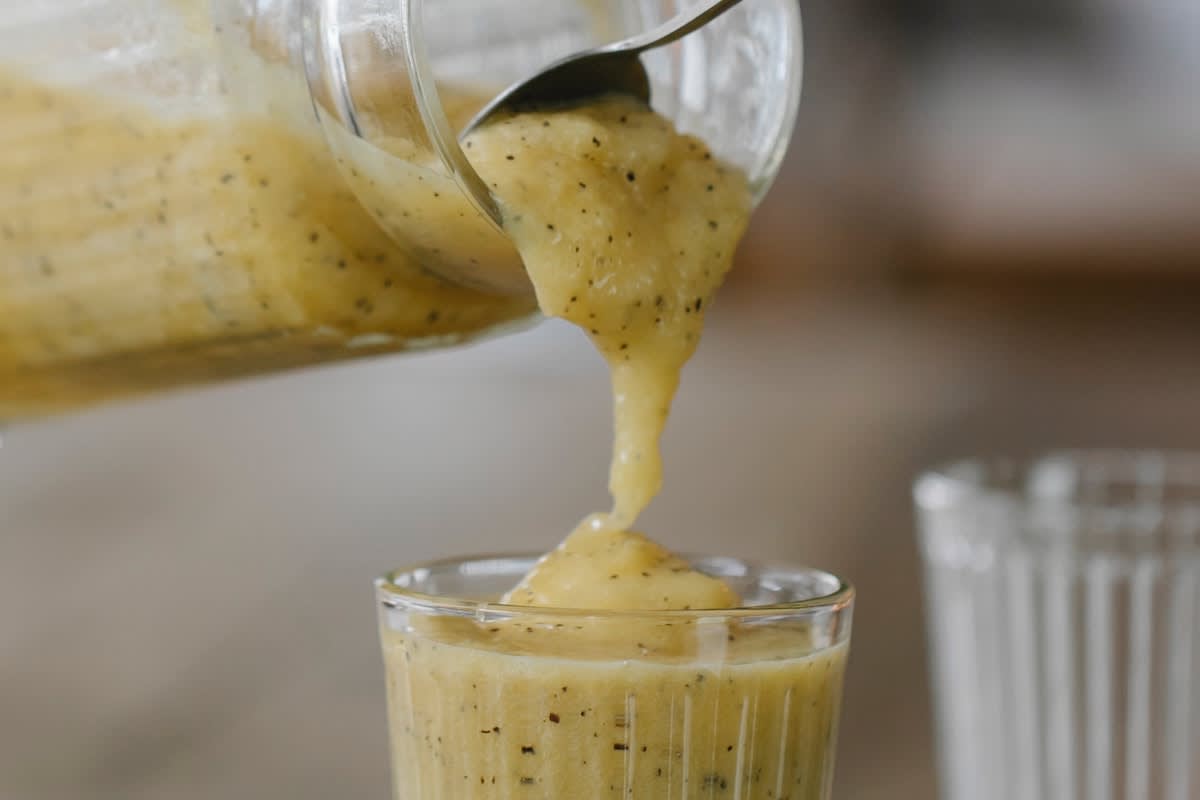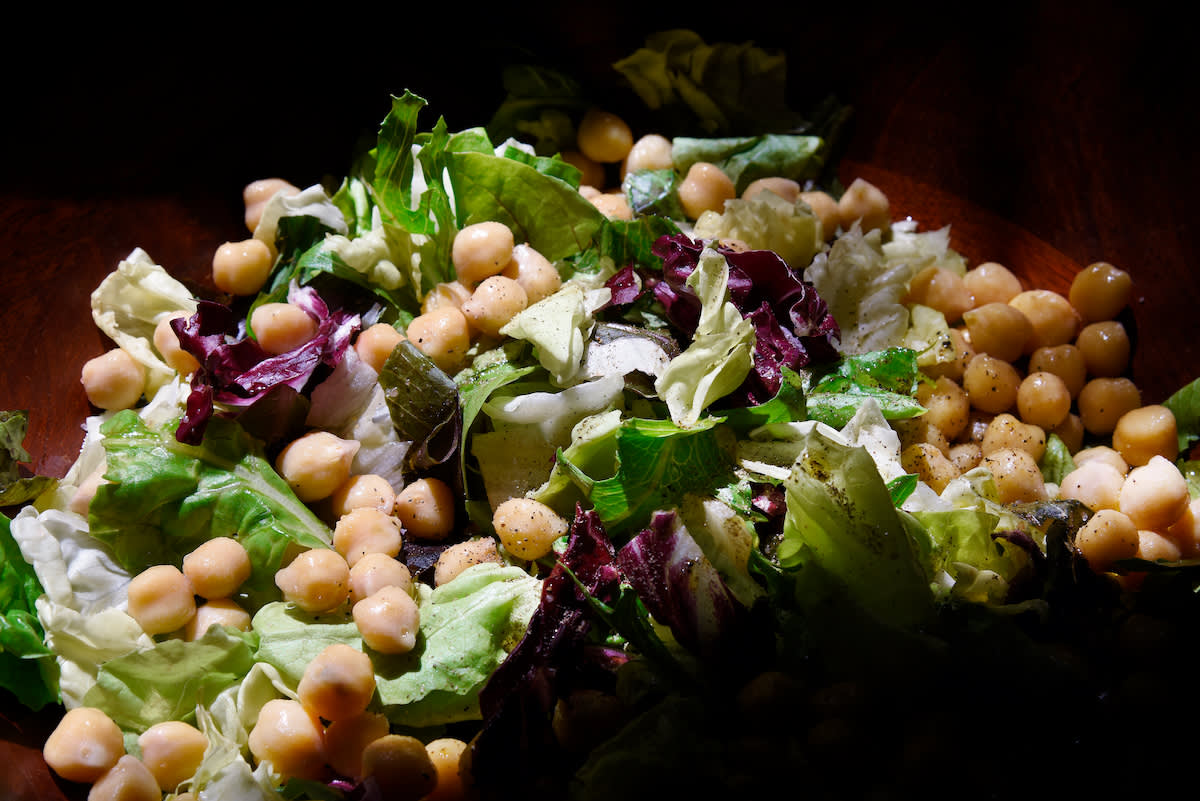
Don’t settle for a boring salad, low on nutrition
A salad is typically the fastest, easiest way to get a bunch of your daily veggies in one meal. But the typical basic salad isn’t super appetizing. A little lettuce, probably iceberg, a few shreds of carrots, a lone cherry tomato, maybe a few croutons? Top it off with some bottled ranch dressing and you don’t quite have the makings of a salad that provides the nutrients or the fiber of a real meal.
But–with just a little prep ahead of time, you can easily have the ingredients on hand to throw together an exciting salad that is full of flavor, fiber, nutrients, and tasty surprises for your tongue. You’ll just need to think a little outside the box on what belongs in a salad, and what actually can make it a meal.
Start with your leafy base
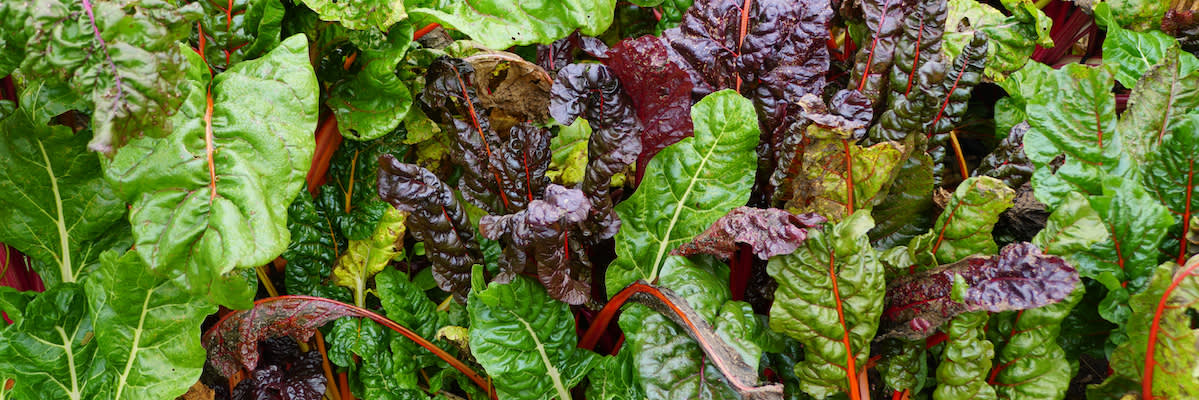
An iceberg wedge is a fantastic, classic salad. And you may feel satisfied with that until you branch out a little into other lettuces and sample the cornucopia that is salad greens. Widely available is the easy-to-find romaine, butter, and both green and red lettuces. Arugula (also known as “rocket”) is a small leaf that has a slightly peppery flavor. Frisee and escarole are on the more bitter side and have leaves that are a little spiky. Then you’ve reached the outskirts of lettuce to the intensely flavored, purple, and white leaves of radicchio. Lastly, you have your powerhouses: spinach and kale. Both are dark green and hearty.
Consider doing a mix of lettuces for a variety of tastes and textures. Bagged and boxed lettuces provide mixes as well, combining baby or spring greens with spinach, kale, and other lettuces, for a great shortcut.
Throw in your basic veggies
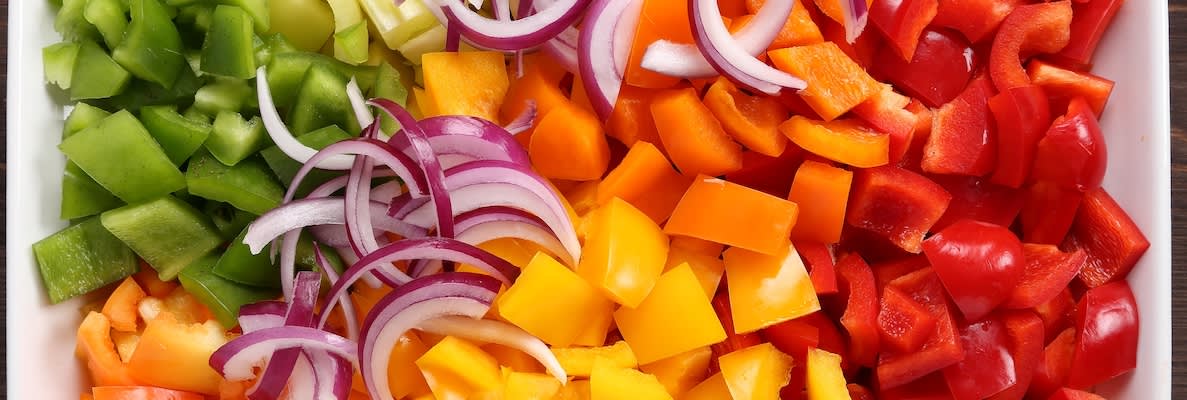
Carrots, celery, radishes, mushrooms, onions, cucumbers, and peppers give you your base of crunchy salad vegetables. If you stopped there you’d have a pretty darn good salad. You get some different flavors, textures, and nutritional profiles from all of these veggies. But, still… it’s a pretty “normal” salad.
How about taking some chances with your ingredients? Stepping a little out of the norm with a few more unusual items thrown into your bowl will take your salad from “meh” to a very filling meal that not only delights your taste buds, but fills you up with protein, and lots of butyrate-boosting fiber.
Then come the amazing add-ins
Our categories for the special ingredients include roasted, grains, grilled, nuts, dips, and “extra special.” You can try one or two (and let your mouth and microbiome enjoy the amazingness), or go for it and try as many as you like. Nearly all of these add-ins can be prepped and kept in your fridge for tossing right into your salad bowl.
Roasted sweet potatoes
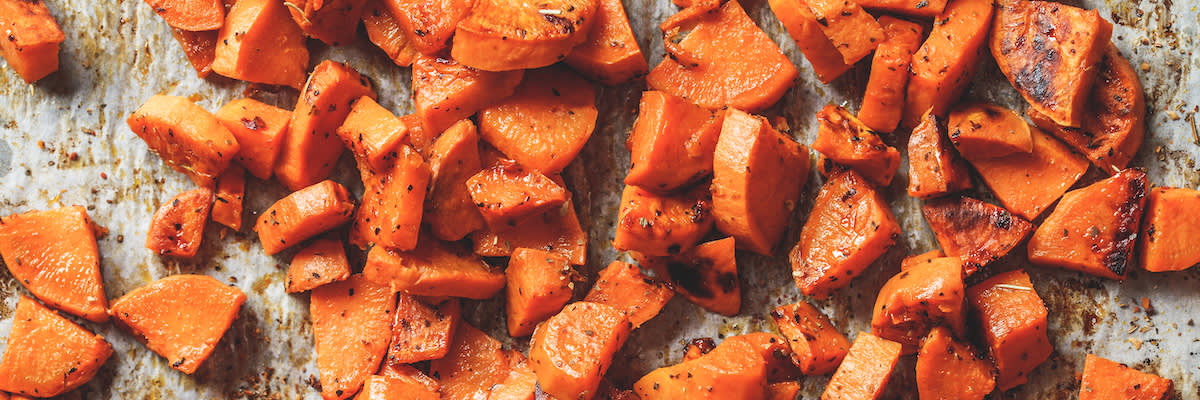
Sweet potatoes, when roasted, are golden and crispy on the outside, soft and sweet on the inside, and a perfect foil for your leafy greens.
Not only do sweet potatoes have a good dose of fiber (6.6 g), but one cup contains a whopping 213% of the Daily Value (DV) of vitamin A!
Peel and cube them up, toss with a little avocado oil, salt & pepper, then roast on a sheet pan at 425 degrees for 30 minutes or until golden brown and easily pierced with a fork.
Roasted veggie alternatives:
Beets - when roasted, beets have a delicious, earthy taste and are a good source of nitrates to support healthy blood pressure.*
Broccoli - toasty browned florets taste less bitter with roasting and 1 cup gives you 100% of your DV of vitamin C.
Carrots - roasted carrots become softer and so much sweeter. Their soluble fiber, called pectin, is great food for your microbes.
Cooked whole grain farro

Farro is a hearty, whole grain, Italian wheat with a nutty taste and chewy texture. Adding about a ¼ cup to your salad gives you 5 grams of fiber and a wide range of antioxidants including polyphenols, carotenoids, and selenium.
Traditional farro takes about an hour to cook, however, you can find 10-minute packaged farro in some popular specialty stores (looking at you, Trader Joe’s, thanks!).
Whole grain alternatives:
Quinoa - not exactly a whole grain, but is still considered one by the Whole Grains Council.1 Toasting your cooked quinoa with a little olive oil gives it a fantastic crunchy texture.
Bulgur - a versatile grain made from parboiled, cracked wheat, and a good source of protein (6g per cup). The chewy texture makes it a good vegan swap for ground meat in chili and tacos.
Kamut - an ancient wheat, known to have more protein, amino acids, vitamins, and minerals than traditional wheat.
Grilled pork tenderloin

It was marketed as “the other white meat” back in the early 90s, but pork in general is not automatically thought of as a healthy protein. However, pork tenderloin is a far cry from bacon. A 3 oz. serving has 22g protein and 3.7g fat. Not bad! Plus, it’s rich in zinc, potassium, selenium, and B vitamins.
You can grill your pork tenderloin ahead of time and refrigerate it whole. Cut medallions from it over the next few days to add to your salad as a delicious alternative to the usual ho-hum grilled chicken.
Mix together about a ¼ cup of olive oil, a pinch of salt, freshly ground pepper, a good spoonful of Dijon mustard, a little honey or maple syrup, and a few dashes of dried oregano, thyme, and rosemary for a marinade. Place your tenderloin in a zip bag, pour the marinade over it, and store in the fridge to marinate for at least 24 hours. Grill at medium heat until internal temperature reaches just under 165 degrees, remove and let rest for 10-15 minutes to finish cooking.
Grilled alternatives:
Tempeh - this fermented version of soy really holds up to the grill well. Slice your tempeh thinly, let it sit in your favorite marinade for about 5 hours, then grill on each side for 4 minutes.
Salmon - when grilled directly on the grates or on a cedar plank, salmon is indeed the meatiest of fishes. Rich in omega 3’s and high in all the B’s: B6, B12, niacin, pantothenic acid, thiamine, and folic acid.
Toasted pumpkin seeds
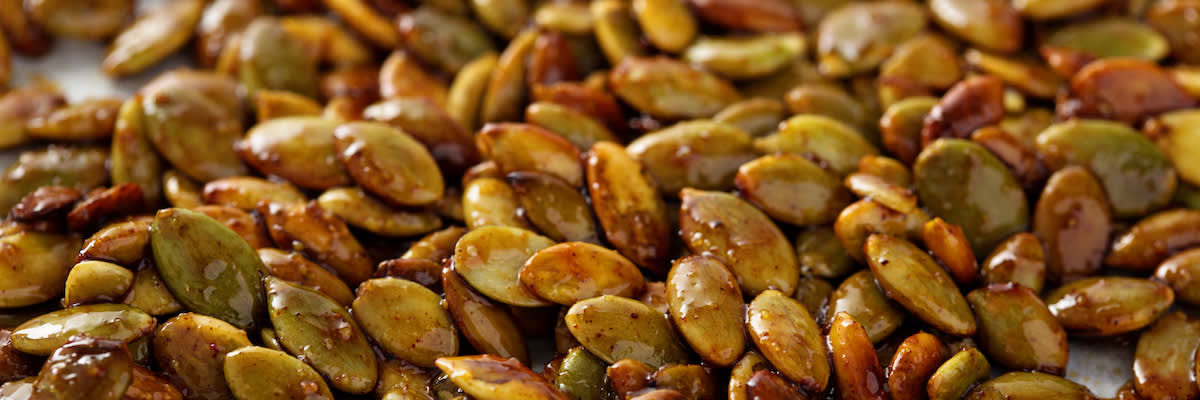
Nuts and seeds provide excellent fats and protein to your salads, and raw pumpkin seeds are delicious and in fact can be very fulfilling if used as a protein source for your meal. Add a bold portion (try ⅓ cup) of toasted seeds to your salad to give you a full 16g of protein. Plus, they are a fantastic natural source of magnesium for supporting healthy bones and blood sugar levels.*
When you toss your pumpkin seeds into a dry pan and heat them on medium for a few minutes, those natural oils start to come out, and they begin to brown on the outside just a little. Keep them moving around so they don’t burn.
Toasted nut alternatives:
Hazelnuts - gently crush your hazelnuts before toasting them in your pan and adding them to your salad for a rich, nutty flavor and a good source of fiber, sodium-free, and cholesterol free.
Pistachios - you can lightly chop your pistachios before toasting them if you like, but they are small enough to leave whole. The prebiotic fiber in pistachios is a favorite for certain microbes in your gut microbiome to help make the metabolite butyrate for better gut lining health.*
Dollop of Hummus
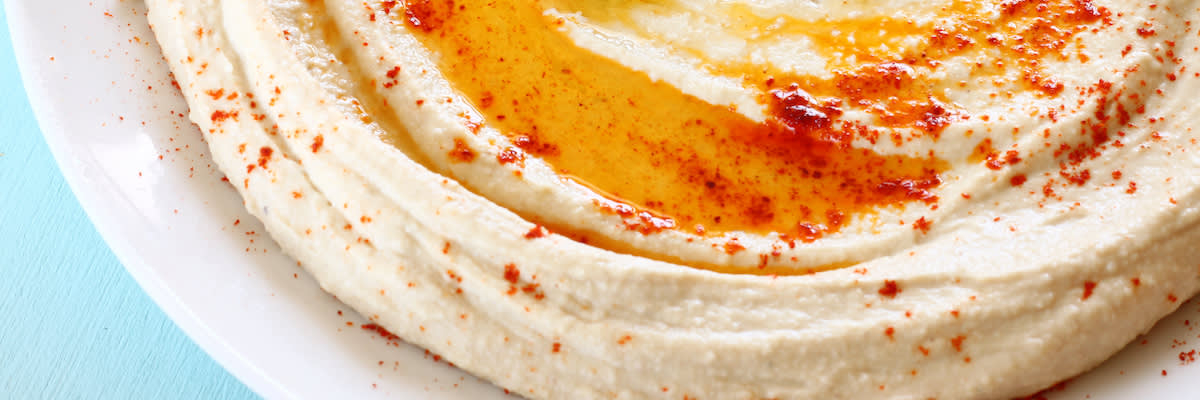
Sure, it’s a dip, but adding a nice dollop right on top of your salad is a treat you will always look forward to. Scoop it up in a forkful of your greens, or mix it into your whole salad to become more of a thick dressing.
Aside from being packed with vitamins, minerals, and protein, chickpeas are considered a prebiotic food, which means they feed the beneficial bacteria in your gut microbiome.*
Dip alternatives:
Baba Ganoush - smoky, lemony eggplant goodness, with tahini and olive oil mixed in.
Tzatziki - cool and crisp with Greek yogurt and dill.
Muhammarra - bright and sharp with roasted peppers and walnuts.
The special razzle dazzle toppings:
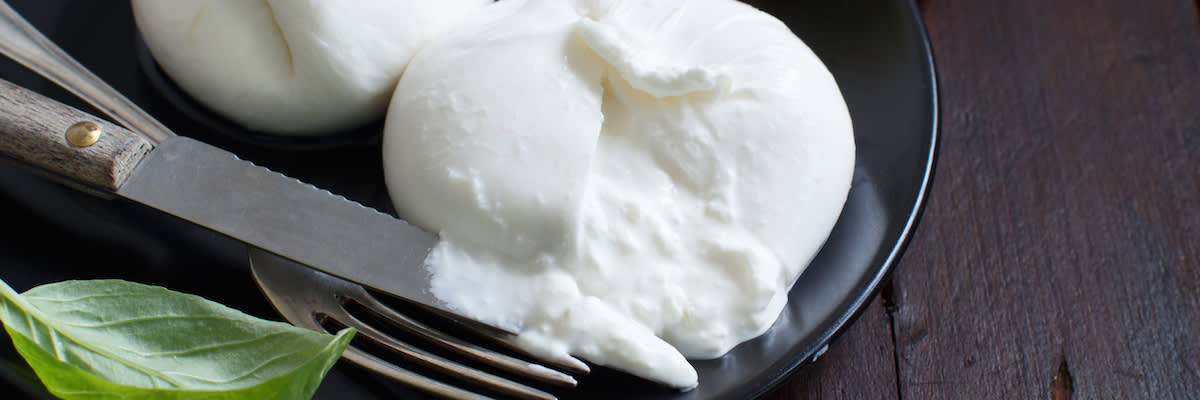
Fresh burrata, broken open on top of your salad
Beautiful avocado slices
A toasted whole grain garlic crostini
A perfectly poached egg (don’t knock it until you’ve tried it!)
Make sure your salads are never boring again with this new staple of special ingredients to make your salad more exciting, nutritious, and filling.
References:
1 Quinoa – March Grain of the Month, Whole Grains 101. (n.d.). Oldways Whole Grains Council. wholegrainscouncil.org.


